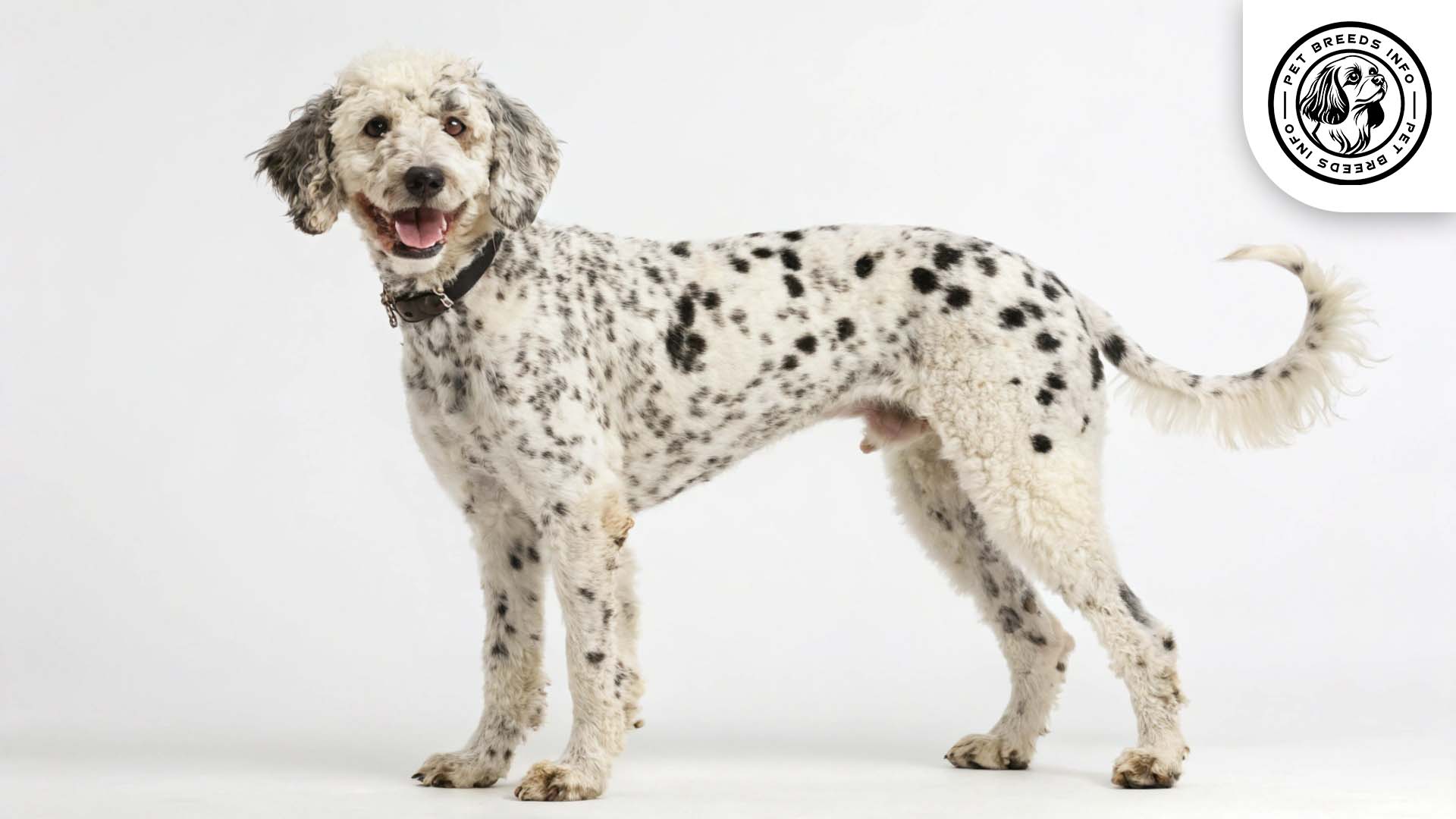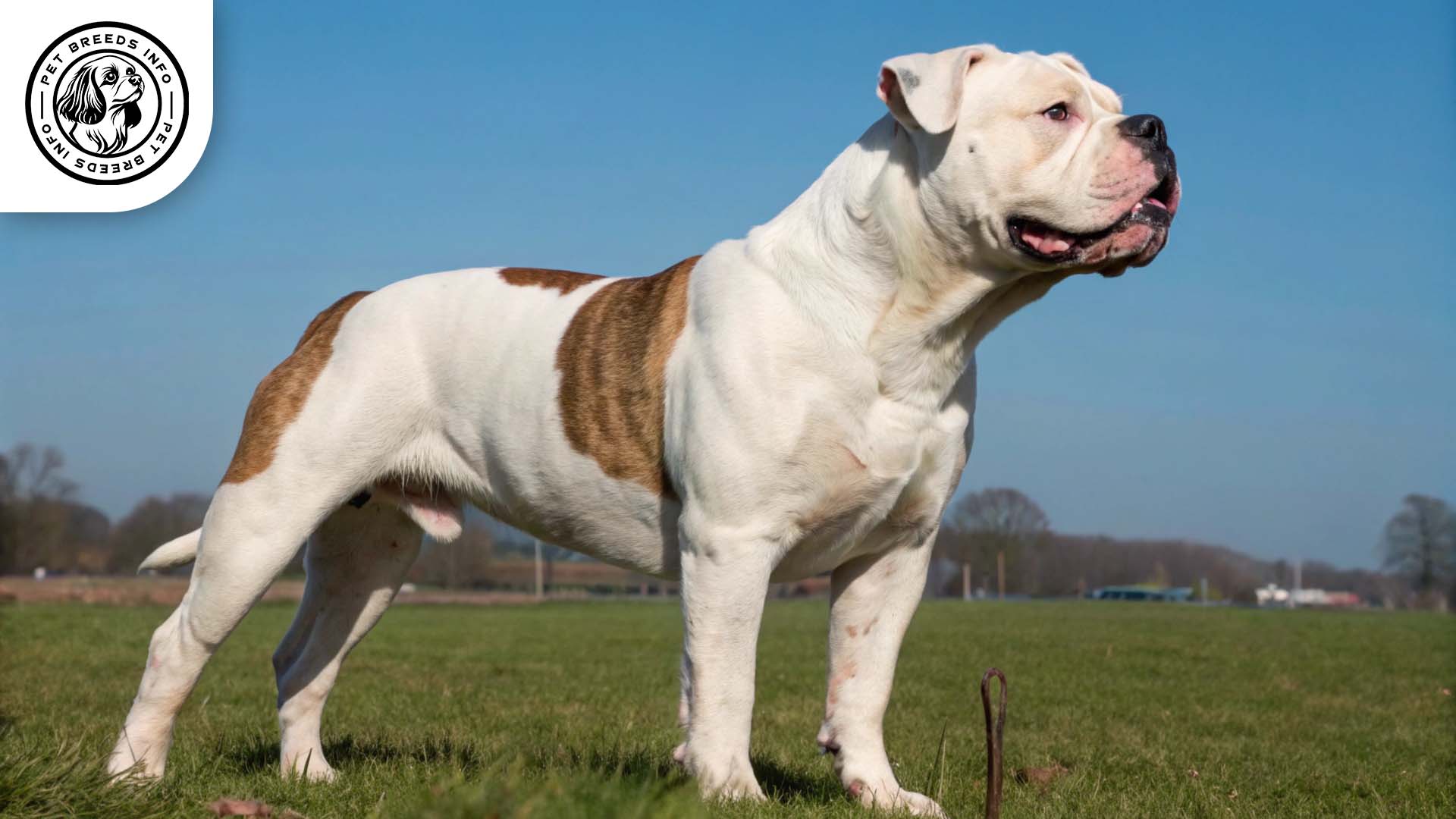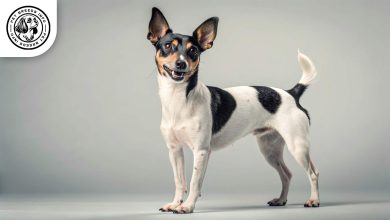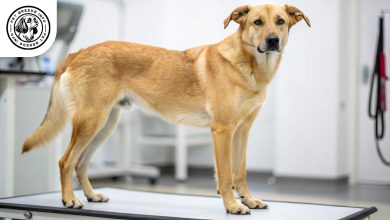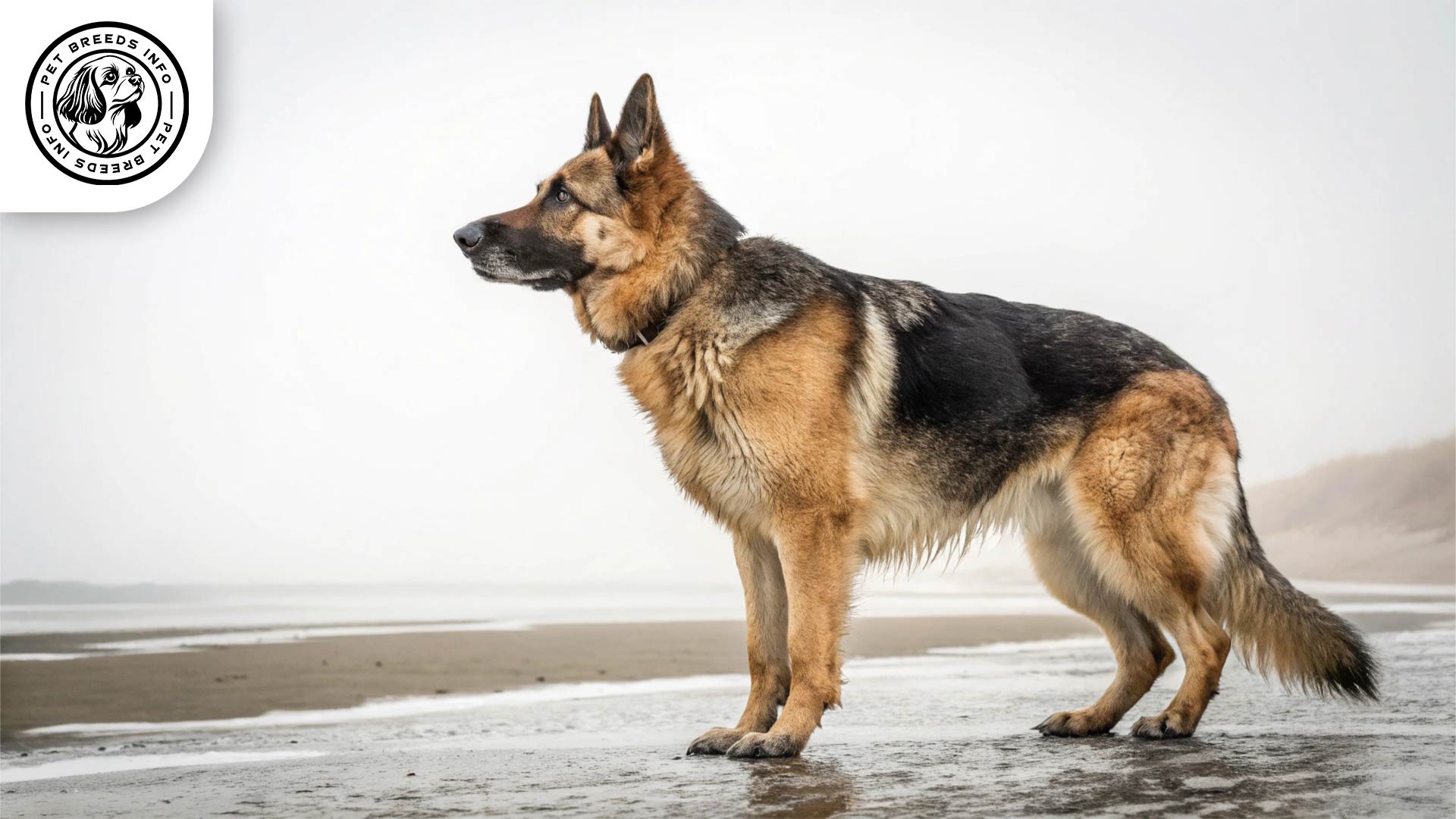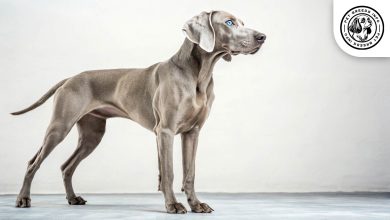Dalmadoodle Dog Breed: Size, Health, Price & Personality
General Introduction of the Breed
The Dalmadoodle, also known as the Dalmapoo or Dalmatian Poodle Mix, is a designer dog breed resulting from crossbreeding a Dalmatian with a Poodle. This hybrid breed originated in the United States and was developed to combine the intelligence and hypoallergenic coat of the Poodle with the unique spotting and athleticism of the Dalmatian.
Table of Contents
| Weight | 40 – 70 lbs (18 – 32 kg) |
| Lifespan | 12 – 15 years |
| Diet | High-quality dry or wet food; 2 to 3 cups daily, divided into two meals |
| Care | Daily exercise (at least 60 min), regular brushing, ear cleaning, and routine grooming |
| Health | Prone to hip dysplasia, ear infections, skin allergies, and urinary stones |
| Color | Black and white, brown and white, or blended variations |
| Nature | Intelligent, energetic, affectionate, and social |
| Price | $800 – $2,500 |
Physical Characteristics
The Dalmadoodle is a medium to large-sized breed. Males typically stand between 18 to 24 inches (46 to 61 cm) in height and weigh around 40 to 70 pounds (18 to 32 kg), while females are slightly smaller.
The coat can range from wavy to curly, depending on the genetic influence of the Poodle parent. Common colors include black and white, brown and white, or a more blended variation of the two.
The eyes are usually dark brown or amber, while the ears are floppy and medium in size. The tail is typically long and slightly curved. One standout feature of the Dalmadoodle is its unique spotted or patchy coat pattern, inherited from the Dalmatian side.
Read More: Maltipoo Dog
Personality and Temperament
The Dalmadoodle is an intelligent and highly trainable dog, thanks to its Poodle lineage. This breed is energetic and requires plenty of physical activity to stay happy and healthy. It forms strong bonds with its owners and craves attention.
It is a friendly breed that generally gets along well with children and other pets. However, early socialization is essential to ensure well-rounded behavior. Due to its playful nature and strong prey drive, supervision is recommended when interacting with smaller animals.
This breed is sensitive to its surroundings and may be prone to anxiety if left alone for long periods. A stable, loving environment is essential for a Dalmadoodle’s well-being.
Care and Maintenance Requirements
Dalmadoodles require at least 60 minutes of exercise daily, including walks, playtime, and mental stimulation activities. They do best in homes with access to a yard but can adapt to apartment living with sufficient exercise.
Grooming depends on the coat type. If the dog has a curlier coat, it will require frequent brushing to prevent matting. Regular ear cleaning, nail trimming, and bathing as needed are necessary for maintaining overall hygiene.
This breed may be sensitive to extreme heat, so proper hydration and shade are essential during warm weather.
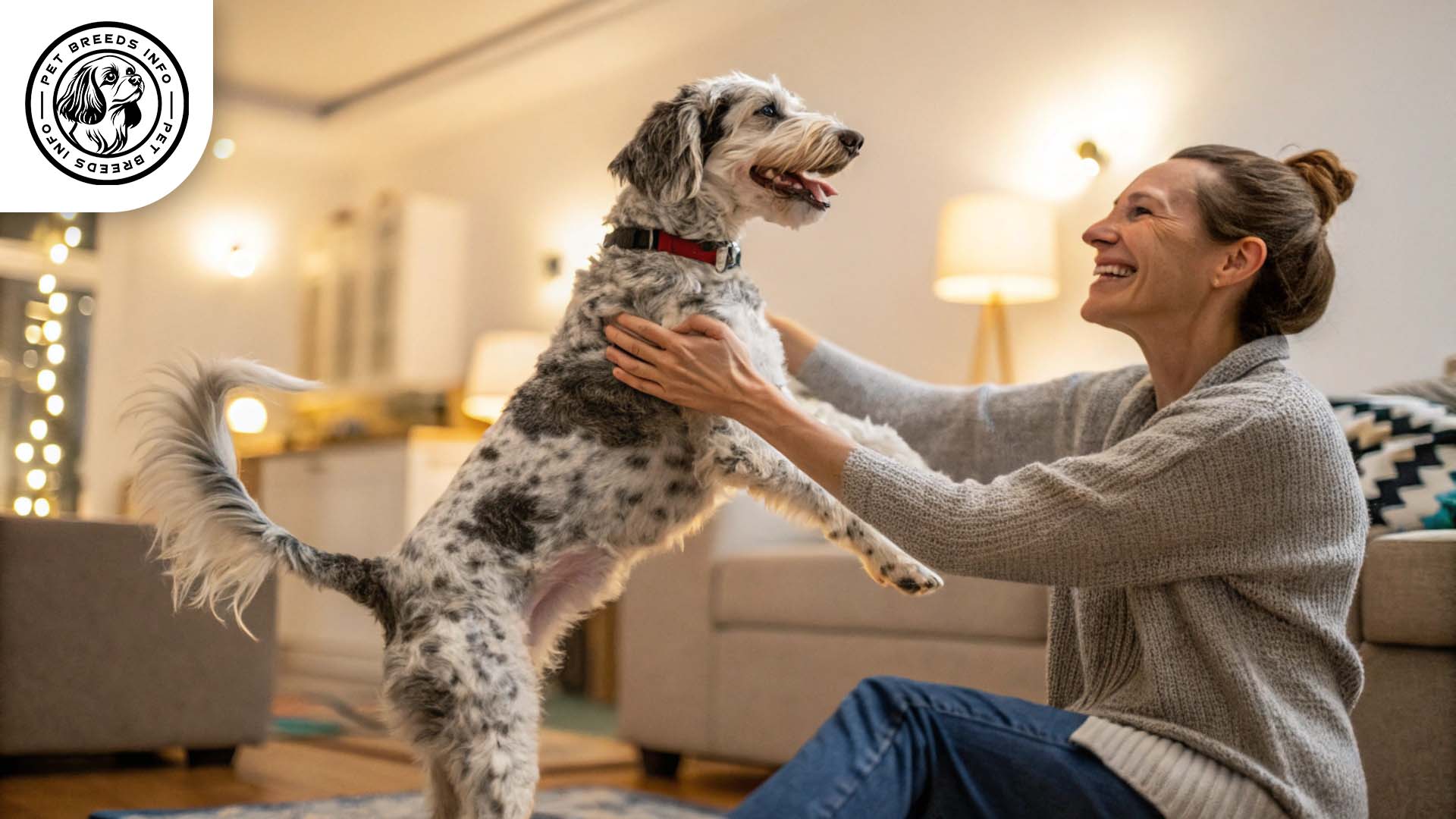
Diet and Nutrition
A balanced diet consisting of high-quality dry or wet dog food is recommended for the Dalmadoodle. Depending on activity level and size, they typically require around 2 to 3 cups of food daily, divided into two meals.
Read More: Chorkie Dog Breed
Common allergens such as grains or artificial preservatives should be avoided for dogs with sensitivities. Foods such as chocolate, onions, grapes, and excessive fatty foods should always be avoided.
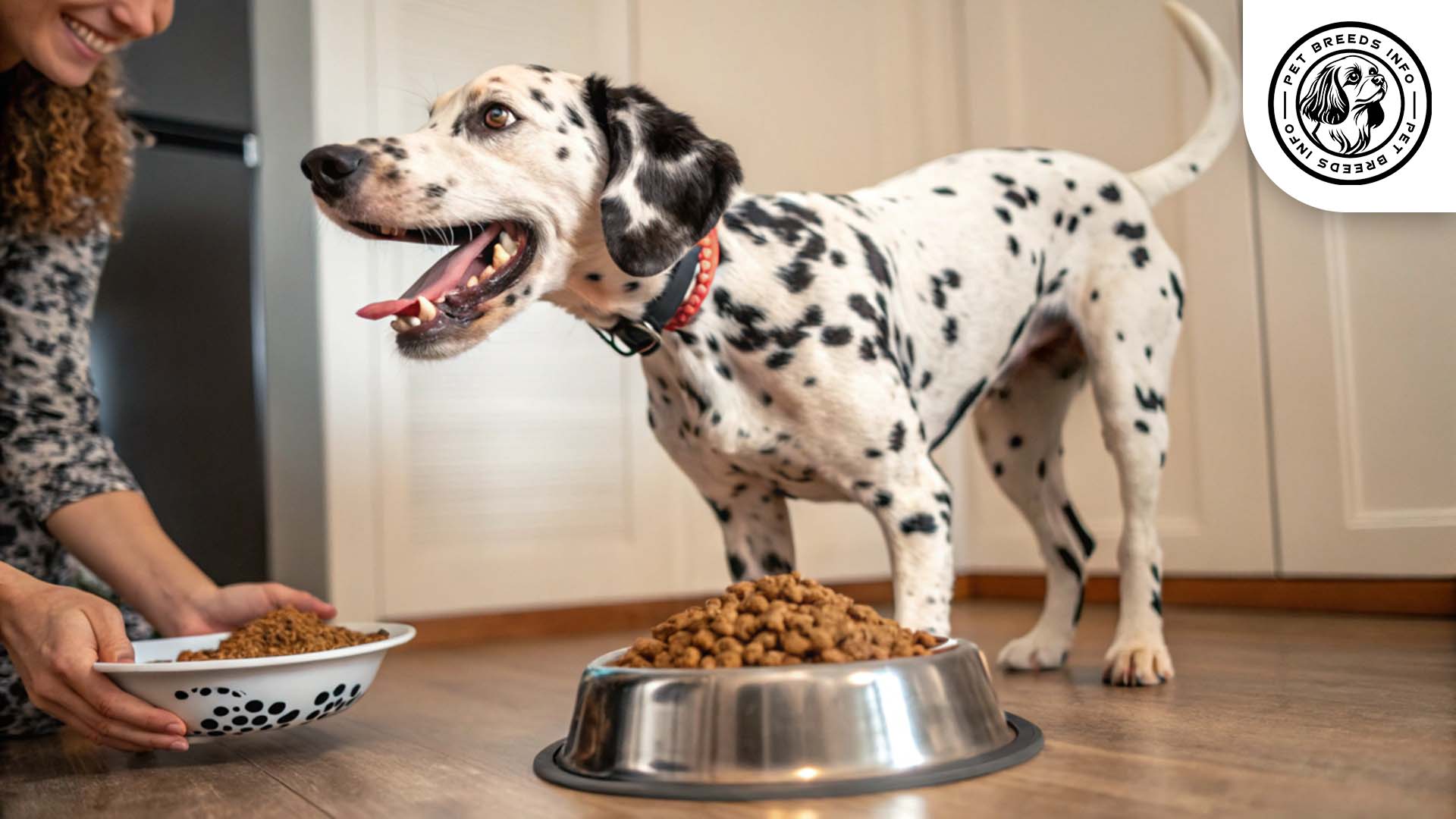
Health and Common Medical Issues
The Dalmadoodle is generally a healthy breed but can be prone to genetic conditions inherited from its parent breeds. Common health concerns include hip dysplasia, ear infections, and skin allergies.
Some Dalmadoodles may inherit urinary stone formation from the Dalmatian side. Regular vet check-ups and a proper diet help prevent such conditions. The average lifespan of a Dalmadoodle is between 12 to 15 years.
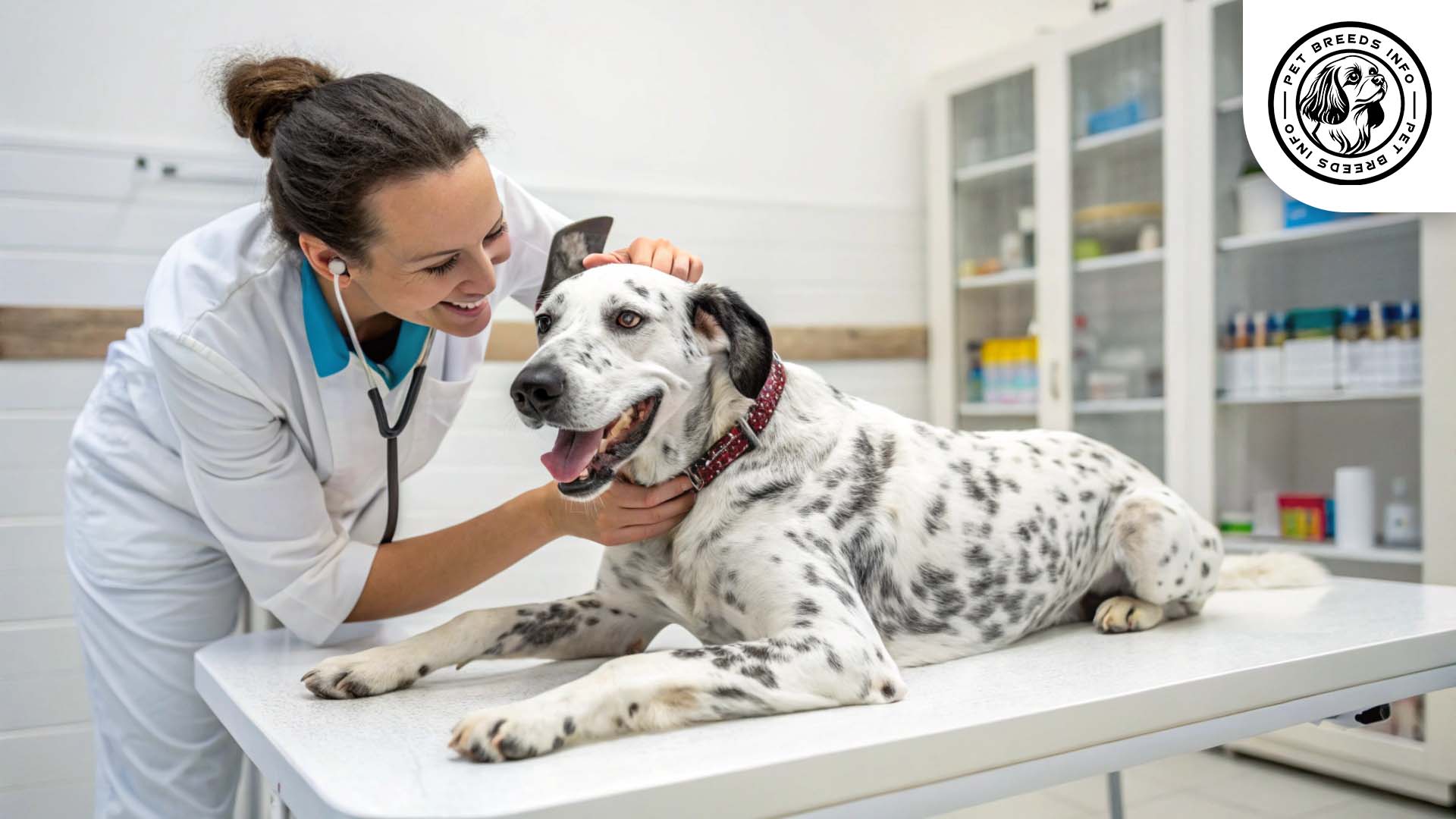
Training and Behavior Management
Training a Dalmadoodle is relatively easy due to its intelligence, but consistency is key. Positive reinforcement methods such as treats and praise work well. Early socialization helps prevent shyness or anxiety.
Leash training is essential, as this breed can have a strong prey drive and may chase small animals. Mental stimulation through training games and puzzles is highly effective in keeping them engaged.
Interaction with Other Animals and Humans
Dalmadoodles are affectionate and friendly with children, making them great family pets. They generally get along well with other dogs, but their playful nature may be overwhelming for smaller or more reserved pets.
They thrive in households where they receive plenty of human interaction. However, they may not be suitable for owners looking for an independent breed, as they require attention and companionship.
Read More: Australian Labradoodle Dog
Price and Availability
The cost of a Dalmadoodle puppy can range from $800 to $2,500, depending on the breeder, lineage, and coat type. When adopting or purchasing a Dalmadoodle, it is crucial to choose a reputable breeder who conducts health screenings.
Adopting from rescue organizations or adoption centers is also a great option, as many hybrid breeds need loving homes.
Conclusion and Final Thoughts
The Dalmadoodle is a loyal, intelligent, and playful breed perfect for active families or individuals who can dedicate time to exercise and companionship. It thrives in loving environments where it receives plenty of attention.
Potential owners should consider this breed’s exercise needs and potential grooming requirements before committing. If you are looking for a unique, affectionate, and energetic canine companion, the Dalmadoodle might be the perfect dog for you.
FAQ
Are Dalmadoodles hypoallergenic?
They may inherit a hypoallergenic coat from the Poodle parent, but not all are low-shedding.
How much exercise does a Dalmadoodle need?
They require at least 60 minutes of daily exercise, including walks and playtime.
Are Dalmadoodles good with children?
Yes, they are friendly, playful, and make great family pets with proper socialization.
Do Dalmadoodles bark a lot?
They are not excessive barkers but may be vocal when excited or anxious.
What health problems do Dalmadoodles have?
They can be prone to hip dysplasia, ear infections, skin allergies, and urinary stones.
